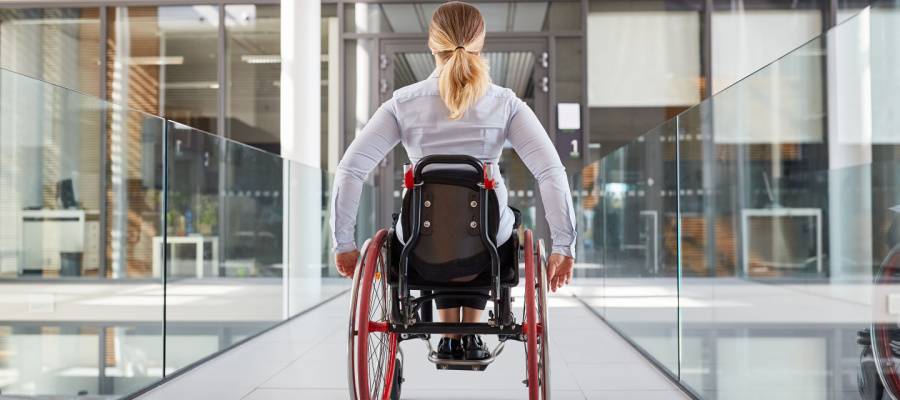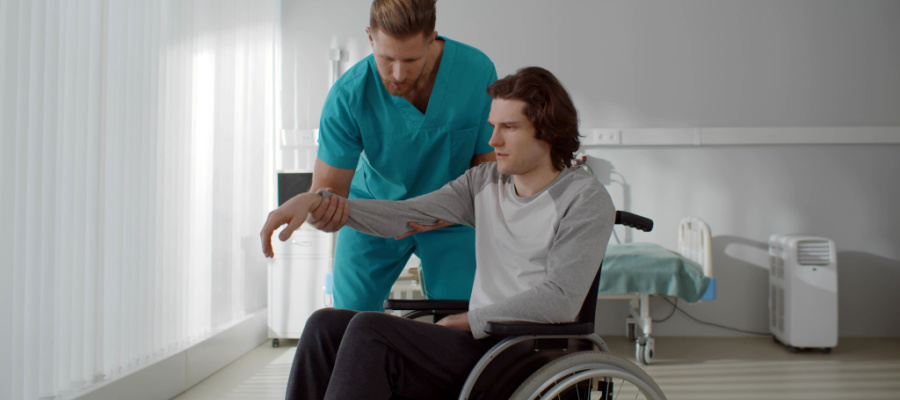How Long Does It Take for a Paralyzed Person to Walk Again?
For individuals with paralysis, the hope of regaining the ability to walk again is a powerful and motivating goal. Even caused by a spinal cord injury, stroke, or other neurological conditions, paralysis can drastically impact one’s ability to walk and move independently. As a result, many people and their families wonder – How long does it take for a paralyzed person to walk again?
At Devoted Helpers, a compassionate home care agency based in Sugar Land, Texas, we understand the complexities of recovery from paralysis. In this article, we will explore the factors that influence recovery time, the challenges involved, and how individuals can get the support they need along the journey toward regaining mobility.
What Causes Paralysis and Loss of Mobility?
Paralysis occurs when the nervous system, specifically the spinal cord or brain, is damaged, leading to a loss of muscle function in one or more parts of the body. The loss of mobility can result from…
- Spinal cord injuries – These injuries, whether due to trauma (e.g., car accidents, falls) or medical conditions (e.g., tumors, infections), can lead to paraplegia (paralysis of the lower half of the body) or quadriplegia (paralysis of all four limbs).
- Stroke – A stroke can damage the parts of the brain that control movement, resulting in partial or total paralysis on one side of the body (hemiplegia).
- Neurological conditions – Diseases like multiple sclerosis, amyotrophic lateral sclerosis (ALS), and Guillain-Barré syndrome can cause progressive paralysis, affecting mobility over time.
Regardless of the cause, the recovery process varies greatly for each individual. Some people may regain the ability to walk, while others may not, depending on the severity and location of the damage to the nervous system.
Factors That Affect Recovery and Walking Ability
The question of how long it takes for a paralyzed person to walk again depends on a variety of factors. Some of the key variables that influence recovery include…
a. Type and Level of Paralysis
The type of paralysis—whether it’s partial or complete—plays a significant role in the recovery process. The location of the injury or damage is crucial…
- High-level spinal cord injuries (involving the cervical or upper thoracic spine) are more likely to result in complete paralysis (quadriplegia), making walking recovery more challenging.
- Lower-level spinal cord injuries (affecting the lumbar or sacral regions) may allow for more movement and may improve the chances of walking again with therapy.
If the paralysis is due to a stroke or neurological disorder, recovery timelines can also vary widely, depending on the severity and location of the brain injury or disease progression.
b. Time Since Injury
The amount of time that has passed since the paralysis occurred is a critical factor in the recovery process. Early intervention is key to improving the chances of regaining mobility. Research suggests that patients who begin physical therapy and rehabilitation soon after the injury have a better chance of improving function.
- Acute phase (first 6-12 weeks) – In the early days following an injury, the focus is on stabilizing the individual and preventing complications. Significant progress in regaining movement typically occurs within the first 3-6 months.
- Chronic phase (beyond 6 months) – After 6 months, the chances of significant recovery in walking decrease. Neuroplasticity (the brain’s ability to reorganize and form new connections) may still allow for improvement over time, especially with continued therapy and the use of assistive devices.
c. Rehabilitation and Therapy
One of the most important factors in determining how long it will take to walk again is the rehabilitation process. Physical therapy, occupational therapy, and spinal cord injury rehabilitation programs are crucial in helping individuals regain as much function as possible.
A combination of exercises designed to strengthen muscles, improve balance, and increase coordination may help individuals with partial paralysis or limited movement to gradually regain the ability to walk, sometimes with the help of a walker, braces, or wheelchair.
- Therapy in the acute phase – This involves exercises to help prevent muscle atrophy and improve circulation, with the goal of regaining strength and function.
- Advanced therapy – As the patient progresses, more targeted techniques, including gait training (teaching the individual to walk again), may be introduced. In some cases, robotic therapy or functional electrical stimulation (FES) may be used to stimulate muscles and improve walking ability.
d. Age and General Health
The age and overall health of the individual also play a major role in the recovery timeline. Younger, healthier individuals may experience better outcomes than older adults or those with additional medical conditions like diabetes or heart disease. Recovery is possible at any age, and many older adults benefit from targeted therapy.
- Physical condition – A person who was previously physically active may recover more quickly due to stronger muscles and better cardiovascular health.
- Mental health and motivation – Recovery requires a strong emotional and mental commitment. Individuals who are highly motivated to regain function often perform better in rehabilitation, so psychological support and encouragement are important throughout the process.
How Long Does It Take to Walk Again?
Unfortunately, there is no one-size-fits-all answer to how long it takes for a paralyzed person to walk again. Recovery timelines are highly individual. Some people may regain the ability to walk within months, while others may never regain that ability, especially in cases of complete paralysis or when nerve damage is severe.
- For individuals with partial paralysis, significant progress toward walking may be possible within 6 months to a year with intensive physical therapy and support.
- For those with complete paralysis, recovery may take years, and in some cases, walking may not be possible, even with therapy.
It’s essential to manage expectations and focus on functional recovery. Even if walking isn’t achievable, therapies can help individuals regain other important functions, such as self-care skills, transfers, and mobility using assistive devices.
How Devoted Helpers Supports Paralysis Recovery
At Devoted Helpers, we understand that every recovery journey is unique. Whether an individual is recovering from a spinal cord injury, a stroke, or another condition that causes paralysis, our experienced team of caregivers offers personalized in-home care services to help support recovery.
Our services include…
- Physical therapy assistance – Helping clients with recommended exercises and mobility training.
- Daily support – Assisting with personal care tasks like bathing, dressing, and grooming, while providing encouragement throughout rehabilitation.
- Mobility assistance – Helping clients use assistive devices like wheelchairs, walkers, or braces as they work toward regaining movement.
- Emotional support – Offering companionship and support during the recovery process, which can help improve mental and emotional well-being.
If you or a loved one is in need of assistance during the recovery process from paralysis, Devoted Helpers in Sugar Land, Texas, is here to help. Our dedicated caregivers are trained to provide the compassionate care needed to maximize recovery outcomes and improve quality of life.


